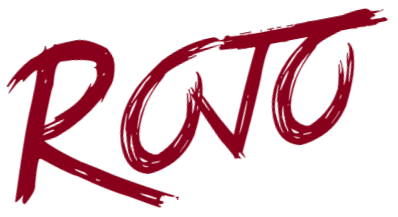Rojo is a flexible multi-tool designed for creating robust Roblox projects.
It's designed for power users who want to use the best tools available for building games, libraries, and plugins.
Rojo lets you:
- Work on scripts from the filesystem, in your favorite editor
- Version your place, library, or plugin using Git or another VCS
- Sync JSON-format models from the filesystem into your game
Later this year, Rojo will be able to:
- Sync
rbxmxmodels between the filesystem and Roblox Studio - Package projects into
rbxmxfiles from the command line
Rojo has two components:
- The server, a binary written in Rust
- The plugin, a Roblox Studio plugin written in Lua
It's important that the plugin and server are compatible. The plugin will show errors in the Roblox Studio Output window if there is a version mismatch.
To install the server, either:
- If you have Rust installed, use
cargo install rojo - Or, download a pre-built Windows binary from the GitHub releases page
To install the plugin, either:
- Install the plugin from the Roblox plugin page.
- This gives you less control over what version you install -- you will always have the latest version.
- Or, download the latest release from the GitHub releases section and install it into your Roblox plugins folder
- You can open this folder by clicking the "Plugins Folder" button from the Plugins toolbar in Roblox Studio
For more help, use rojo help.
Create a new folder, then use rojo init inside that folder to initialize an empty project:
mkdir my-new-project
cd my-new-project
rojo initRojo will create an empty project file named rojo.json in the directory.
The default project file is:
{
"name": "my-new-project",
"servePort": 8000,
"partitions": {}
}To start the Rojo dev server, use:
rojo serveThe tool will tell you whether it found an existing project. You should then be able to connect and use the project from within Roblox Studio!
Bi-directional script syncing is on the roadmap for Rojo this year, but isn't implemented.
In the mean-time, manually migrating scripts is probably the best route forward.
In order to sync code into Roblox, you'll need to add one or more partitions to your configuration. A partition tells Rojo how to map directories on your filesystem to Roblox objects.
Each entry in the partitions map has a unique name, a filesystem path, and the full name of the Roblox object to sync into.
For example, if you want to map your src directory to an object named My Cool Game in ReplicatedStorage, you could use this configuration:
{
"name": "rojo",
"servePort": 8000,
"partitions": {
"game": {
"path": "src",
"target": "ReplicatedStorage.My Cool Game"
}
}
}The path parameter is relative to the project file.
The target parameter is a path to a Roblox object to link the partition to, starting at game. If any objects don't exist along the way, Rojo will try to create them.
Any objects in a partition may be wiped away by Rojo after syncing! If this is not desired, use multiple, smaller partitions.
Run rojo serve in the directory containing this project, then press the "Sync In" or "Toggle Polling" buttons in the Roblox Studio plugin to sync into your game.
The structure of files and diectories on the filesystem are preserved when syncing into game.
Creation of Roblox instances follows a simple set of rules. The first rule that matches the file name is chosen:
| File Name | Instance Type | Notes |
|---|---|---|
*.server.lua |
Script |
Source will contain the file's contents |
*.client.lua |
LocalScript |
Source will contain the file's contents |
*.lua |
ModuleScript |
Source will contain the file's contents |
*.model.json |
Varies | See the example below |
* |
StringValue |
Value will contain the file's contents |
Any directories on the filesystem will turn into Folder objects.
Any directory containing one of these files will instead be a ModuleScript, Script, LocalScript containing the directory's contents:
init.luainit.server.luainit.client.lua
For example, this file tree:
- my-game
- init.client.lua
- foo.lua
Will turn into these instances in Roblox:
my-game(LocalScriptwith source frommy-game/init.client.lua)foo(ModuleScriptwith source frommy-game/foo.lua)
*.model.json files are a way to represent simple Roblox instances on the filesystem until rbxmx and rbxlx support is implemented in Rojo.
This feature is intended for small instances, like RemoteEvent or *Value objects.
JSON Model files are strict, with every property being required. They look like this:
{
"Name": "hello",
"ClassName": "Model",
"Children": [
{
"Name": "Some Part",
"ClassName": "Part",
"Children": [],
"Properties": {}
},
{
"Name": "Some StringValue",
"ClassName": "StringValue",
"Children": [],
"Properties": {
"Value": {
"Type": "String",
"Value": "Hello, world!"
}
}
}
],
"Properties": {}
}There are lots of other tools that sync scripts into Roblox or provide other tools for working with Roblox places.
Here are a few, if you're looking for alternatives or supplements to Rojo:
- Studio Bridge by Vocksel
- RbxRefresh by Osyris
- RbxSync by evaera
- CodeSync and rbx-exteditor by MemoryPenguin
- rbxmk by Anaminus
I also have a couple tools that Rojo intends to replace:
Pull requests are welcome!
All pull requests are run against a test suite on Travis CI. That test suite should always pass!
Rojo is available under the terms of the MIT license. See LICENSE.md for details.

